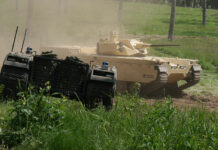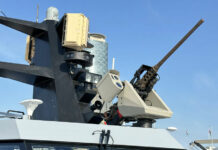US Pull-Out from Iraq Part II:
By David Eshel
What is the real combat value of Iraqi security forces, and against what kind of threats? And more important, to what extent are the Iraqi forces already penetrated by subversive elements?
In Iraq, each of the various ethnic and religious groupings sees itself in an irreconcilable, perhaps mortal, confrontation with the others. Each group has what amounts to its own geographically concentrated militia. In the Kurdish area, for example, internal security is maintained by Kurdish Peshmerga forces, and the presence of the national army is kept to a minimum, if not totally prevented. The same holds true to a substantial extent in the southern, mostly Shiite region. Is it then possible to speak of a national army at all? Today the Iraqi forces are in their majority composed of Shiites, and the insurrection is mostly in traditional Sunni areas. It thus foreshadows a return to the traditional Sunni-Shiite conflict, only with reversed capabilities, this time with the Shiites in control. These forces may well cooperate in quelling any Sunni insurrection. But will they, even when adequately trained, be willing to quell Shiite militias in the name of the nation? Do they obey the ayatollahs, especially Grand Ayatollah Ali Sistani, or the national government in Baghdad?
In spite of its seemingly democratic administration, Iraq is still a land caught between al-Qaeda terrorists and Iranian-supported Shiite extremists. It is a country facing a complex set of challenges, run by imperfect leaders with various agendas, perhaps protected by many courageous security forces but hindered by sectarian elements among them.
In the center, Baghdad remains a major flashpoint reflecting most of the country’s conflicting sections, a conflict which will not go away. Since 2003, American forces were essential to establish and secure order in this huge volatile multi-sect city. The unfortunate reality remains, that that Sunni and Shiite Iraqis simply hate and want to kill each other as they have done for centuries. Violence in sectarian rifted Iraq cannot be controlled. It could be suppressed by a ruthless leadership, like Saddam Hussein’s. Now with the US soldiers gone, sooner or later, violence will resume in the city and spread into the provinces again.
The Iraqi security forces are far from ready to defend the Iraqi people against a sophisticated, well-organized, well-armed insurgency. In fact, western intelligence studies predict that geo-political and ethnic- religious problems will probably never make them into effective counter-insurgency forces capable in subduing the ethnic violence.
As Shias, Sunnis and Kurds seem unable to come to terms with each other, there is an even further threat to stability, looming beyond the Iraqi borders. A deteriorating situation in Iraq could encourage regional powers such as Iran and Saudi Arabia to play a greater role in Iraq’s domestic affairs. Iran’s influence on the Shia-majority Baghdad government means that Tehran could dominate the political scene in Iraq. This will inevitably place the Sunni minority (only 20% of Iraq’s population) under constant threat. Ultra-extreme elements, such as Al Qaeda and the Saudi Wahabis, will not be waiting to watch their brethren massacred by the hated Shiites and intervene with force. The Saudi leadership could be using all in its power, to prevent President Obama to withdraw the US Army from Iraq, as planned, warning Washington that in doing so, will create a massive bloodshed of unprecedented proportions, rocking the entire region into a religious Shiite-Sunni war.
As of last Friday, 4,315 American soldiers had given their lives in Iraq and more than 31,000 had been wounded. Hundreds of billions of American taxpayer’s money have been spent on a war that most Americans, including the present President, believe was a mistake. But President Obama’s shortsighted and irrational Iraq policy might well backfire and put all this sacrifice to waste. It is time to wake up to Middle Eastern realities and prevent another catastrophe from happening in this explosive region.
The Iraqi Army:
On paper the new Iraqi armed forces are impressive in number: As of early 2009, the army’s combat units consists of 14 divisions, 52 brigades, and 172 battalions totaling about 200,000 personnel, while another 70,000 soldiers man support units, headquarters staffs, and training units. Several more divisions are being fielded this year, although their final composition is not yet decided. Thirteen of the fourteen current divisions are light infantry consisting of 3 or 4 infantry brigades each, with each brigade comprised of three or four infantry battalions. Every division also includes a bomb disposal company; intelligence, surveillance, and reconnaissance company; engineer company; signals company; and motorized transportation regiment.
A large domestic security apparatus has been created. The forces of the Ministry of the Interior, although not yet fully trained, estimated numbering 380,000 to 220,000 manpower, are regarded loyal to the Baghdad leadership. But Analysts warn that this loyalty has to be put to test in time. In fact, the new Iraqi Army is widely known to have been infiltrated by a multitude of groups ranging from local militias to foreign insurgents, allegedly even intelligence officers from the Iranian Revolutionary Guard. Infiltration by elements not primarily loyal to the ruling government presents an ongoing danger to the lives and operations of the entire army. Iranian influence is felt most heavily within the Iraqi Government, the Iraqi Security Forces (ISF), and especially, Shiite militias.
The major units of the Iraqi army are currently deployed as follows
- 1st Division (counter-insurgency) Habbaniyah
- 2nd Infantry Division Al Kindi
- 3rd Infantry Division Al Kasik
- 4th Infantry Division Tikrit
- 5th Infantry Division KMTB (Kirkuk military training base)
- 6th Infantry Division Baghdad
- 7th Infantry Division Al Asad
- 8th Infantry Division Diwaniyah
- 9th Mechanized Infantry Division Taji
- 10th Infantry Division Basrah
- 1st Special Intervention Forces Brigade Baghdad International Airport
















